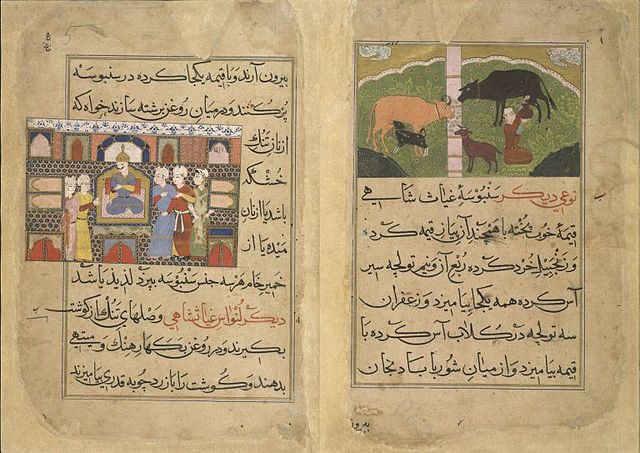South Asian cuisine, includes the traditional cuisines from the modern-day South Asian republics of Bangladesh, India, Maldives, Nepal, Pakistan and Sri Lanka, also sometimes including the kingdom of Bhutan and the emirate of Afghanistan. Also sometimes known as Desi cuisine, it has been influenced by and also has influenced other Asian cuisines beyond the Indian subcontinent.
An assortment of spices and herbs. Spices are an indispensable food ingredient in much of the subcontinent.
Bhang eaters from India c. 1790. Bhang is an edible preparation of cannabis native to the subcontinent. It has been used in food and drink as early as 1000 BCE by Hindus in ancient India.
A page from the Nimatnama-i-Nasiruddin-Shahi, the book of delicacies and recipes. It documents the fine art of making kheer.
Medieval Indian Manuscript Nimatnama-i-Nasiruddin-Shahi (circa 16th century) showing samosas being served.
A cuisine is a style of cooking characterized by distinctive ingredients, techniques and dishes, and usually associated with a specific culture or geographic region. Regional food preparation techniques, customs, and ingredients combine to enable dishes unique to a region.
An example of Central European cuisine, the wiener schnitzel. It is prepared with regional ingredients and according to the local cooking style.
An example of nouvelle cuisine presentation. This dish consists of marinated crayfish on gazpacho asparagus and watercress.
Typical Ethiopian and Eritrean cuisine: Injera (thin pancake-like bread) and several kinds of wat (stew)
A Ramadan dinner in Tanzania








